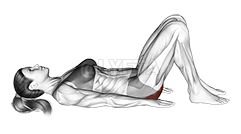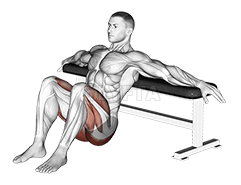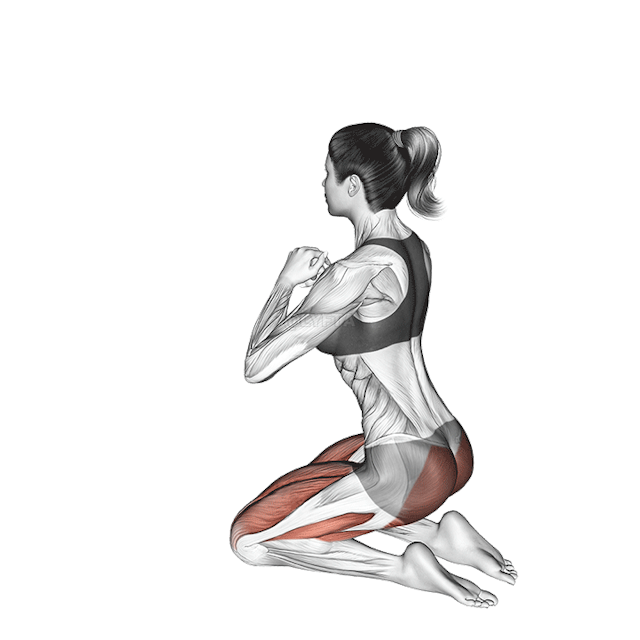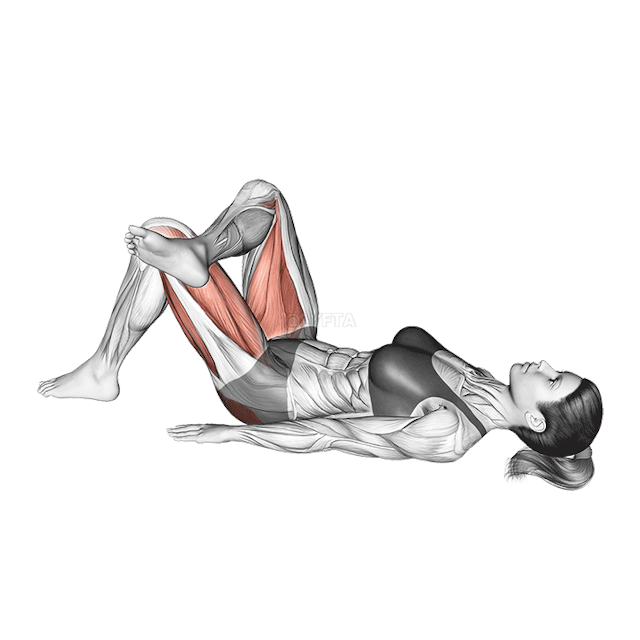
Hip Thrusts
Exercise Profile
Related Exercises:
Introduction to the Hip Thrusts
Hip Thrusts are a highly effective exercise primarily targeting the glutes, hamstrings, and lower back, thus promoting lower body strength and stability. This exercise is suitable for anyone looking to enhance their athletic performance, improve body shape, or rehabilitate from certain injuries. People may want to incorporate Hip Thrusts into their workout regimen as they help in improving posture, reducing lower back pain, and boosting overall performance in other lifts and physical activities.
Performing the: A Step-by-Step Tutorial Hip Thrusts
- With your feet planted firmly on the ground and your knees bent, push through your heels to lift the barbell by extending your hips upward towards the ceiling.
- At the top of the movement, your body should form a straight line from your shoulders to your knees.
- Hold this position for a second, ensuring your glutes are fully engaged.
- Slowly lower the barbell back down to the starting position and repeat the movement for your desired number of repetitions.
Tips for Performing Hip Thrusts
- **Maintain Proper Form:** Keep your chin tucked and eyes looking forward to maintain a neutral spine throughout the exercise. Avoid arching your back excessively, which can lead to lower back pain. Instead, focus on squeezing your glutes at the top of the movement.
- **Controlled Movement:** Perform the hip thrust in a controlled manner. Avoid rushing the movement or using momentum to lift your hips. This not only reduces the effectiveness of the exercise but also increases the risk of injury. Slowly lower your hips back down after
Hip Thrusts FAQs
Can beginners do the Hip Thrusts?
Yes, beginners can definitely do hip thrusts. This exercise is highly beneficial for strengthening the glutes, hamstrings, and lower back. However, it's important for beginners to start with a lower weight or even just their body weight to ensure they are using the correct form and to avoid injury. As they get stronger and more comfortable with the exercise, they can gradually increase the weight. It's always recommended to have a trainer or experienced individual guide you through the exercise initially to ensure proper form.
What are common variations of the Hip Thrusts?
- Single-Leg Hip Thrust: This variation requires performing the hip thrust with only one foot on the ground, which increases the intensity on the working glute.
- Barbell Hip Thrust: This involves placing a weighted barbell across your hips to add resistance while performing the hip thrust.
- Banded Hip Thrust: This variation involves using a resistance band around your knees to engage your glutes and thighs more during the exercise.
- Swiss Ball Hip Thrust: This variation involves placing your upper back on a Swiss ball while your feet are flat on the floor, which helps to challenge your balance and engage your core.
What are good complementing exercises for the Hip Thrusts?
- Deadlifts also complement hip thrusts as they target the posterior chain, which includes the hamstrings and glutes, strengthening these muscles and improving overall hip function.
- Glute bridges, similar to hip thrusts, isolate the glute muscles but they also engage the hamstrings, providing variety and balance to your glute workout routine.
Related keywords for Hip Thrusts
- Bodyweight hip thrusts
- Glute strengthening exercises
- Hip workouts at home
- Bodyweight exercises for hips
- Hip thrusts without equipment
- Strengthening hips with body weight
- No-equipment hip exercises
- Home workouts for hip muscles
- Bodyweight glute workout
- Hip thrust exercises at home









